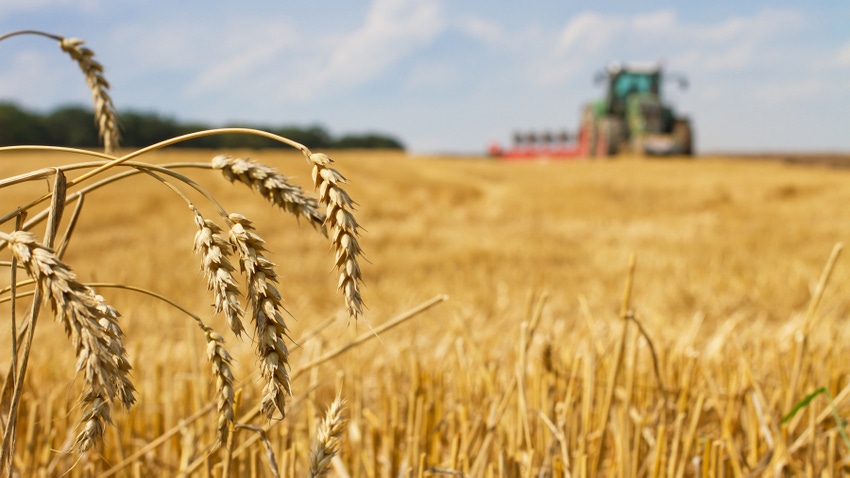March 20, 2023

By Aaron Smith, University of Tennessee and Grant Gardner, University of Kentucky
Each year, USDA’s Office of the Chief Economist holds the Agricultural Outlook Forum. The event discusses important agricultural topics and provides supply and demand projections for the upcoming year.
This article examines the 2023 Agricultural Outlook Forum projections and compares historical Agricultural Outlook Forum projections and final USDA estimates for corn, soybeans, and wheat for the 2010 to 2022 crop years.
Historical Projections
From 2010-2022, USDA’s February projected production for corn, soybeans, and wheat averaged 655 million bushels higher, 518 million bushels lower, and 15 million bushels higher than final estimates, respectively. The difference between February production projections and final estimates can be partially explained by yield or acreage changes, due primarily to weather events.
For example, in 2019, floods in the Midwest dramatically reduced planted and harvested acres (Figure 1; acres planted and harvested); and in 2012, severe drought caused final corn yields to be 40.9 bu/acre below the February projection. Considering the tremendous amount of uncertainty this time of year, USDA has been reasonably accurate with initial projections.
On average, the difference (overestimated or underestimated) between projected and final production estimates has been 6.8% for corn, 5.7% for soybeans, and 6.4% for wheat.
Domestic consumption projections have also been accurate with an average discrepancy of 2.8% for corn, 2.6% for soybeans, and 6% for wheat.
Export projections
Exports have been more challenging to project, primarily due to the relationships between domestic production, foreign production, substitution, and global demand. On average, USDA has missed export projections by 23.4%, 11.7%, and 12.6% for corn, soybeans, and wheat, respectively.
For corn, from 2010-2022, on average, the USDA February total use projection was 290.4 million bushels higher than the final estimate. Total projected wheat use was 31.4 million bushels higher, and soybean use was 11.4 million bushels lower than the final estimate, on average.
USDA has had challenges with projecting ending stocks and prices. Projected ending corn stock estimates have ranged from 1.4 billion bushels more to 316 million bushels less than the final USDA estimate, with an average projection of 342 million bushels higher than the final estimate.
Soybean ending stocks have, on average, been projected 51 million bushels higher in February than final estimates, with a range of 320 million bushels higher to 449 million bushels lower than the February projection.
Wheat ending stocks have, on average, been projected 47 million bushels lower in February than the final estimate, with a range of 239 million bushels higher to 213 million bushels lower than the February projection.
On average, USDA missed corn, soybean, and wheat marketing year average (MYA) prices by 17.4%, 12.7%, and 13.5%, respectively. In 8 out of 13 years, the February MYA price projection has been lower than the final MYA price for corn, soybeans, and wheat.
For corn, projected prices were under final prices by over 30% in 4 out of 13 years (2010, 2012, 2021, and 2022). The largest projected miss, among years where the February projected MYA price was higher than the final MYA price, was 7.1% in 2013.
2023 Projections
Initial expectations from the 2023 Agricultural Outlook Forum point to a 3% projected increase in planted crop acres for corn, soybeans, and wheat relative to 2022 plantings.
Corn acreage is projected to increase from 88.6 million acres in 2022 to 91 million acres in 2023. In 2022, planted corn acreage was affected by weather delays, which prevented plantings in various regions of the United States.
Soybean acreage is projected to stay the same as 2022 at 87.5 million acres. Soybean acreage projections are driven by strong demand for domestic crush and growth in biofuel production capacity.
Of the three crops, wheat acreage is projected to incur the largest increase in planted acreage, up to 49.5 million acres in 2023 from 45.7 million planted acres in 2022. Increases in projected wheat plantings are driven by tight U.S. stocks and continued high global prices, caused in part by the war in Ukraine.
Prices for all three crops are projected to be lower in 2023 than 2022 but are projected to remain above their respective 10-year historical averages. Season average per-bushel prices for corn, soybeans, and wheat are projected to fall from $6.70, $14.30, and $9.00 in 2022 to $5.60, $12.90, and $8.50 in 2023.
Price decline
The price projections are driven by low beginning stocks and growth in projected acreage and yield, which will facilitate higher projected exports and ending stocks for the 2023/24 crop year.
The decline in 2023 projected prices is driven by record expected soybean and corn crops in South America, which will increase competition in export markets. Additionally, estimates of the impact of increased biodiesel production capacity on soybean prices have been uncertain due to the United States’ ability to adapt planted acres to meet increased feedstock demand.
There remains a tremendous amount of uncertainty in production, use, stocks, and prices for the 2023 corn, soybean, and wheat crops. However, the current USDA projections have prices softening, compared to last year for all three commodities.
As such, producers may want to consider using marketing strategies that protect against downside price movements while maintaining flexibility (such as options). This will allow producers to evaluate and modify pricing decisions when additional information is known about the 2023 crop.
USDA will revise projections throughout the year with the next key report being the Prospective Plantings report at the end of March.
Source: Southern Ag Today.
You May Also Like




